Note: measurements taken in the anechoic chamber at Canada's National Research Council can be found through this link.
I got into this hobby as a teenager in the mid-1990s. Back then, I enjoyed the listening experience and loved the gear, but I also appreciated the industry itself. I seem to think the industry was broader and more vibrant than it is today—there were so many independent manufacturers serving the entire budget spectrum. Even the mainstream brands like Sony, Onkyo, and Pioneer had high-end product lines (ES, Integra, and Elite, respectively).
Today, mergers and acquisitions have consolidated the industry. Sadly, some hi-fi makers have been shuttered, so many once-beloved brands have faded into the background. Of the remaining companies that have weathered the changes, many have shifted away from low-volume, high-end product lines to more profitable, high-volume gear. So whenever I come across an independent hi-fi brand, I get excited.
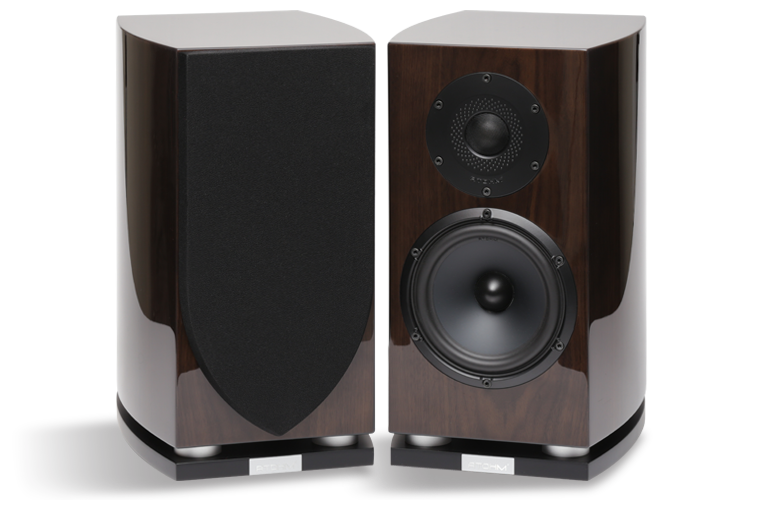
Meet Atohm, an independent speaker manufacturer based in France. It was founded in 2000 by Thierry Comte, who was once a technical director at Triangle, another French speaker manufacturer. In its early days, Atohm was mainly an OEM driver provider for more established manufacturers (including Triangle), but later, Atohm entered the finished-speaker market. Today, Atohm offers a full line of floorstanding speakers, standmounts, in-walls, and subwoofers, as well as DIY kits. This review focuses on the Atohm GT1-HD bookshelf speaker, which retails for $4499 per pair (all prices in USD). It’s the entry-level model in the company’s premium GT Series.
Description
The GT1-HD sits below the company’s GT2-HD and GT3-HD floorstanders in the GT Series. The standmount GT1-HD is a bottom-ported, two-way speaker featuring a 1.1″ treated silk-dome tweeter and a 6″ midrange-woofer. According to the company, the midrange-woofer’s cone is made from a “special alloy” that reduces “audible break-ups.” Along with other design considerations, the result is “exceptional linearity along [this driver’s] useful frequency range.” The two drivers are crossed over at 2.5kHz using the company’s Time Coherent Crossover technology, which appears to use first-order slopes and “time compensation” for the tweeter. Atohm claims that this technology results in a “realistic and perfectly ‘holophonic’ soundstage.” More on this later.
These drivers are part of the company’s Absolute Series, which is designed and manufactured in-house. Atohm is rightfully proud of this. When I unpacked the triple-boxed speakers, I found a booklet titled Technical Book in the packaging. In this booklet, Atohm explains the design of the drivers, the crossover, and the speaker cabinet, which is a delight to folk like me who enjoy the technical nitty-gritties, and the first time I have seen such a thing from any speaker maker.
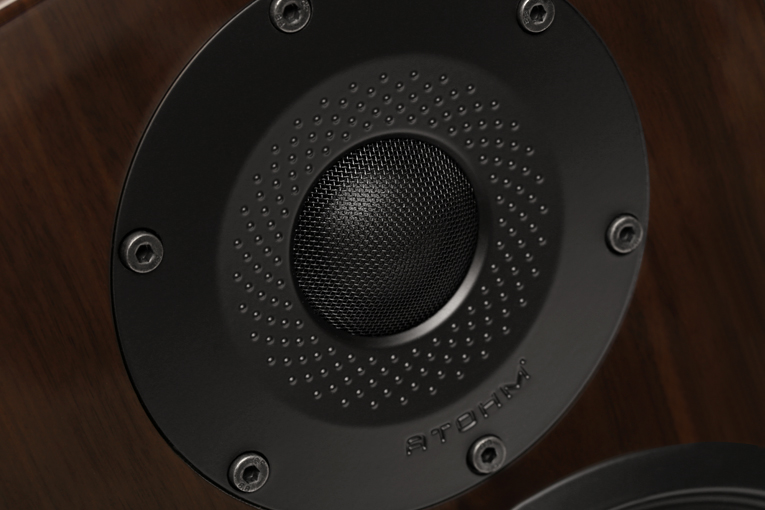
The GT1-HD’s cabinet measures 13.8″H × 8″W × 10.5″D. It’s constructed from MDF, with curved, laminated side panels. The main cabinet is boosted by about a half-inch or so from a plinth to allow for air movement from the bottom port. The plinth also offers a solid base for the speaker and is embellished with a luxurious-looking Atohm badge. The circular spacers that separate the plinth from the main cabinet look to be milled from solid blocks of metal and are polished to a shine. All in all, the plinth is both functional and aesthetically pleasing. The speaker is available in Black Piano Lacquer, White Piano Lacquer, Rosewood, or Wengnut finishes. A wide range of custom colors can be ordered at additional cost. The review sample I got was in Wengnut, which I thought looked similar to a dark walnut veneer.
One other feature I need to highlight is the chunky metal dial located on the back of the speaker, just above the binding posts, but on the same backplate. It has three positions: Smooth, Linear, and High Definition, which alter the tweeter’s output level in the range between 2.5kHz and 30kHz. Smooth reduces output over this range by 2dB compared to Linear, which is the default, and is what I presume gives the most neutral presentation in this frequency range. High Definition raises the output by 3dB over Linear. I’ll talk more about this feature and its usefulness later.
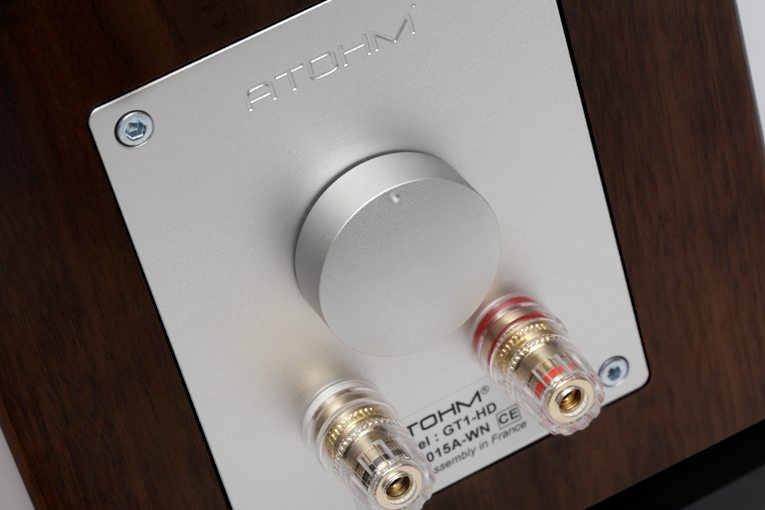
Each GT1-HD speaker comes with two grilles: one is the traditional rectangular style that magnetically attaches to cover the tweeter and woofer; the other is circular and just fits over the woofer, leaving the tweeter exposed. For protection, the tweeter has a permanently attached metal-mesh grille in front of the dome. Providing alternative grilles is a nice touch, allowing owners to play around with the aesthetics, but I suspect that many would opt to leave them off for the best sound quality.
The speaker is extremely well built, with a luxurious, classy look and feel, and weighs 27 pounds. The GT1-HD has a rated impedance of 6 ohms and sensitivity of 89dB (2.83V/1m), and Atohm quotes the frequency response as 45Hz to 30kHz (though no +/- deviations are given). Power handling is rated at 200W peak.
Setup
I paired the speakers with the Atoll IN200 Signature integrated amp, which I recently reviewed on this site; my LKS Audio MH-DA004 DAC; and my custom-assembled PC, streaming Amazon Music HD and playing back FLAC and DSD files ripped from my CDs and SACDs.
I found it fairly easy to drive these speakers with the Atoll amp (120Wpc into 8 ohms) or a lower-powered Yamaha A-S2200 (90Wpc into 8 ohms). I probably would not recommend amplifiers with less power output than the Yamaha; particularly since the Atohms really sang at moderate-to-high volume levels.
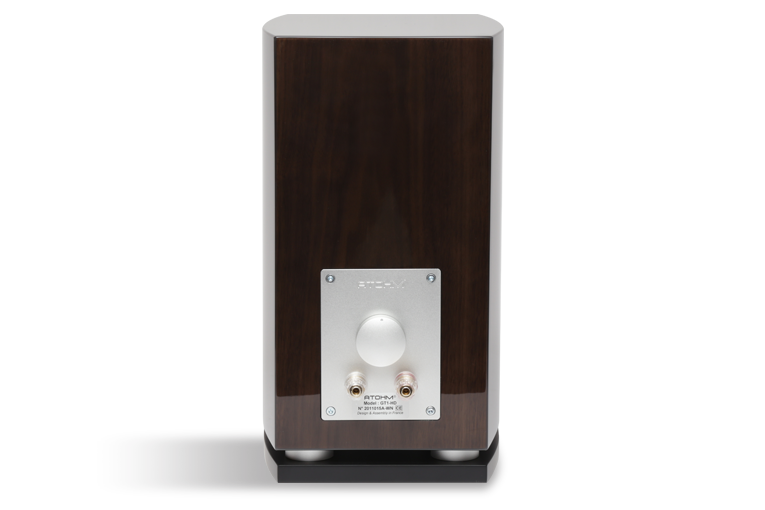
In my experience, the GT-1HDs were very sensitive to placement, and greatly benefited from being spaced farther apart and pulled out a bit more from the wall. They would suit a larger listening space, and also benefited from being placed on appropriate stands. Unfortunately, Atohm does not make matching stands for these speakers, but inexpensive 22″ Monoprice stands I purchased sufficed for my review. I suspect most owners would prefer to get better quality stands to match the appearance of the GT1-HDs.
Sound
When I first unboxed the GT1-HDs, I gave them a quick listen to make sure they weren’t damaged in transit. I hastily placed them on my equipment rack and fired them up. My initial impressions were underwhelming: the sound was dull, and imaging and soundstaging were sub-par. But thankfully, this wasn’t my first rodeo, so I started experimenting with the placement of the speakers on the Monoprice stands.
I first noticed that the soundstage expanded disproportionally as I spread them farther apart, and, along with adjusting the toe-in, the imaging became significantly more focused and defined. I also found that they started to reveal significantly more detail, and the sound was crisper and more controlled. So, the moral of the story is that you should take your time to make sure you get the placement of your speakers right in your room . . . trial and error is your friend when it comes to speaker placement.
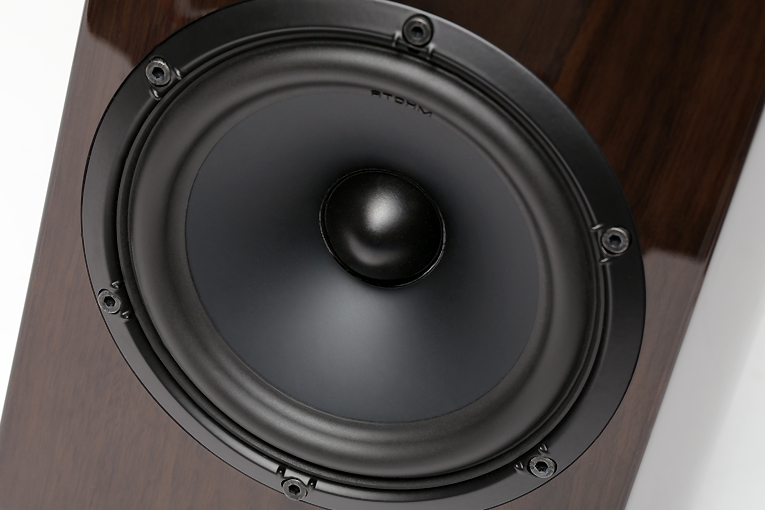
Another pleasant surprise, after getting the GT1-HD placement right, was the three-dimensional soundstage that these speakers produced. Remember that “realistic and perfectly ‘holophonic’ sound stage” mentioned in the technical booklet packed with the speakers? Well, I had no idea what “holophonic” means, but Google related it to the term “holography”; in other words, 3D soundstage. So perhaps Atohm’s Time Coherent Crossover is not just some marketing gimmick, after all?
Once I had fine-tuned the speaker placement, I was ready for some serious listening. First up, the obligatory Pink Floyd and The Dark Side of the Moon (DSD64, EMI). The intricate detail on this album, particularly the decays of drums and cymbals, was exceptional over the GT1-HDs and stepped fully into the territory of my Revel F226Be floorstanders, which cost nearly twice as much. The sound was unexpectedly full; in fact, many who stopped by my house thought it was coming from the Revels, which were still standing next to the Atohm speakers. Circling back to that high-frequency level dial on the back of the speakers I mentioned earlier, I found that leaving the dial on Linear was just right for the vast majority of tracks I played through the GT1-HDs. However, some tracks where the recording was a bit hot on the top end benefited from switching the dial to Smooth. As an example, the ringing bells on the track “Time” can pierce your ears at high volume. I did not find the High Definition setting particularly useful, because the top end on the GT1-HDs was very open and clear, and had just the right level of amplitude for my taste on the Linear setting. This was exemplified by the vocals on the track “Brain Damage.”
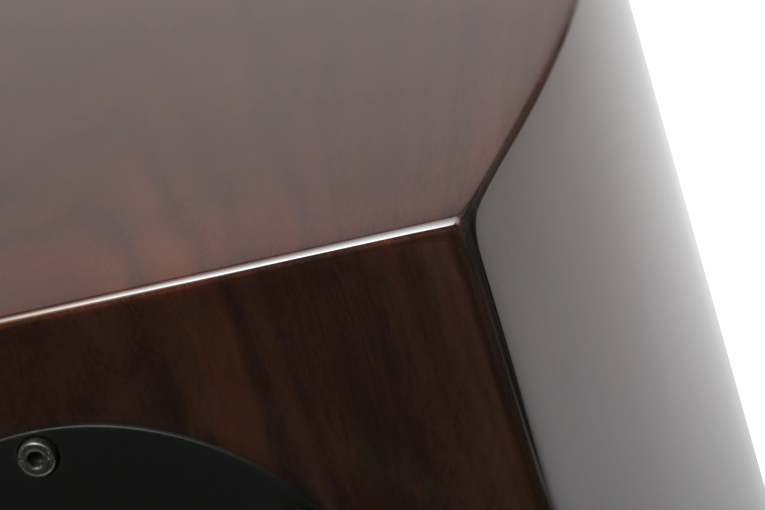
I must confess that I haven’t always been a fan of country music—until I discovered Chris Stapleton’s Traveller (16-bit/44.1kHz FLAC, Mercury Nashville), thanks to a suggestion by a streaming service. I thoroughly enjoyed every track on this album when I played them through the GT1-HDs. The one track that I want to highlight is “Parachute,” which showcased the bass reproduction of these speakers in a very elegant way. While there seems to be a slight bump in the upper bass and lower midrange, this characteristic added to the speaker’s overall signature of being full, present, and punchy in the lows.
To examine the GT1-HDs’ performance on vocals, I resorted to an album that doesn’t have a whole lot of vocals: Mindi Abair’s It Just Happens That Way (16/44.1, The Verve Music Group / Amazon Music HD). Playing “Save Tonight,” I could really appreciate Mindi’s lifelike, smooth, accentuated, and layered vocals as presented by these speakers. I ended up putting this track on repeat, as it was that good through the Atohms. “Save the Last Dance” was a great track to experience the 3D soundstage; the saxophone sounded four to five feet closer to me than I’m used to, while the other instruments surrounded and enveloped me.
Which leads me to The Jimi Hendrix Experience’s Electric Ladyland (16/44.1 FLAC, Legacy). For the many who have heard this album before, you probably know that it’s got an amazing three-dimensional soundstage that was a result of sound engineer Eddie Kramer’s experiments with phase during the mixing. Interestingly, the 3D soundstage wasn’t as accentuated over the Atohms as I thought it would be, but the speakers did bring the level of liveliness up a notch. On the track “Gypsy Eyes,” the drums, the guitar, the vocals . . . they all came together in a cohesive manner. The bass sounds from the drums were defined, and I could pinpoint where Jimi was on stage. The depth and the width of the soundstage extended beyond the dimensions of my room with each string pluck and subsequent reverb.
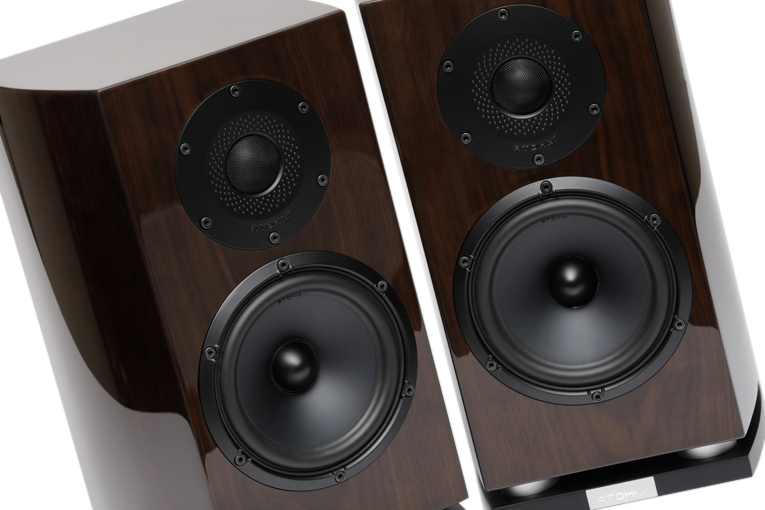
I decided to pay homage to my ’80s and ’90s New York City roots, so I unapologetically blasted my man Biz Markie’s Just a Friend – EP [Explicit] (16/44.1, Rhino Entertainment Company / Amazon Music HD). The title track is a rather simple song, as the instrumentation isn’t overly complex, so the focus is on the vocals. And like other tracks I played through the GT1-HDs, the vocals jumped out while the speakers disappeared sonically into the background. It was smooth like butter, and the Atohms took Biz’s storytelling to a whole new level.
Comparisons
I happened to have another bottom-ported, soft-dome-equipped bookshelf speaker like the GT1-HD around: the Wharfedale Reva-1 ($799/pair when new, but no longer in production). Admittedly, there’s a huge price differential, but the Reva-1s didn’t even come close in performance to the much more expensive GT1-HDs. The GT1-HDs had better bass, more presence and authority, smoother and clearer vocals, a bigger soundstage, and a more open top end.
As mentioned earlier, I also put the GT1-HD up against the Revel PerformaBe F226Be floorstander ($7700/pair). Once again it’s an uneven matchup, although this time it’s the Atohm that’s the “budget” offering, but I made it because the GT1-HD’s sound can easily be mistaken for that of a floorstanding speaker.
I typically have two types of reaction to speakers that win me over: one is shock, as my jaw drops; the other is head-jerking attention, followed by a big smile. The F226Be’s elicited the first reaction and the GT1-HDs the second. The Revels reproduced pristine, neutral sound, with an extraordinary amount of detail and information, and a clear separation between each instrument and the vocals. The Atohms created 3D soundstages that never got old, and the bass response approximated what I have heard from floorstanding speakers. Was this some type of Jedi mind trick? More likely, just good engineering and voicing.
While the GT1-HDs had excellent bass performance that rivaled many floorstanding speakers, they did not stand up to the F226Be’s in a direct comparison in this category—but only by a small margin. However, in the fullness of the overall sound, the Atohms held their own against the Revels. It was a fairly even matchup for vocals, which sounded silky-smooth and were clearly projected by both sets of speakers. But through the GT1-HDs, the vocals sounded slightly warmer; a bit more coloration, perhaps, but this coloration gave the sound a fun factor and more fullness. I will admit to having a bias for beryllium tweeters, which enabled the Revels to provide more detail; but the Atohms were much more forgiving of poorly recorded tracks, while still being able to extract an appreciable amount of nuance.
To hold up against a floorstanding speaker costing close to twice the price is a feat of its own. This makes me want to listen to the GT2-HD and the GT3-HD. If the baby of the family can perform this well, what could its larger siblings do?
Conclusion
Should you buy this speaker? If you just want a quick answer, then yes, I would heartily recommend the Atohm GT1-HD.
But there are a few things you should think through before you jump the gun. First, let’s be honest here, $4499 per pair is a significant investment, and you’ve still got to purchase suitable stands.
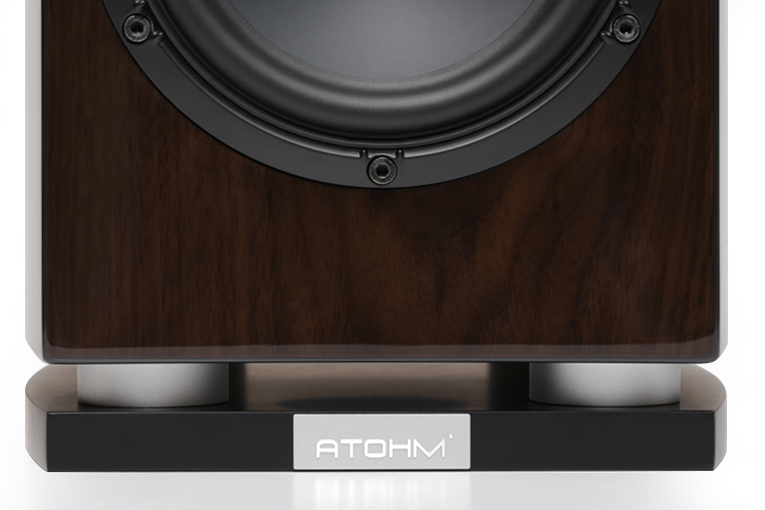
Second, are standmount speakers your only option (or preference) over floorstanding speakers? If yes, then you should definitely audition the GT1-HD. In my opinion, the Atohm performs as well as many floorstanders. If you are not committed to the bookshelf format, then consider including floorstanding speakers in your audition. At this price point, there are some solid options out there.
Lastly, are you someone who appreciates a product that is designed and manufactured by an independent company, where the owner is also the designer, and there’s a story and a face behind the product? Or are you a diehard audiophile who feels that the end product is all that matters? If you are the former, then the GT1-HD just might check another box. The combination of all these attributes could make the Atohm GT1-HD an irresistible prospect.
. . . Dan Kong
dank@soundstage.com
Associated Equipment
- Sources: Custom-built PC (Intel Core i5, Asus motherboard, Crucial RAM, Samsung SSD) streaming Amazon Music HD; LKS MH-DA004 digital-to-analog converter.
- Speakers: Revel PerformaBe F226Be, Wharfedale Reva-1.
- Integrated amplifiers: Atoll IN200 Signature, Yamaha A-S2200.
Atohm GT1-HD Loudspeaker
Price: $4499 per pair.
Warranty: Five years, parts and labor.
Welcohm Technology
12 rue du Breuil
70150 PIN
France
Phone: + 33 3 81 47 91 01
Email: contact@atohm.com
Website: www.atohm.com
North America distributor:
Emilios Mandalios
Audio Excellent
Phone: (847) 774-4619
Email: info@audioexcellent.com






















